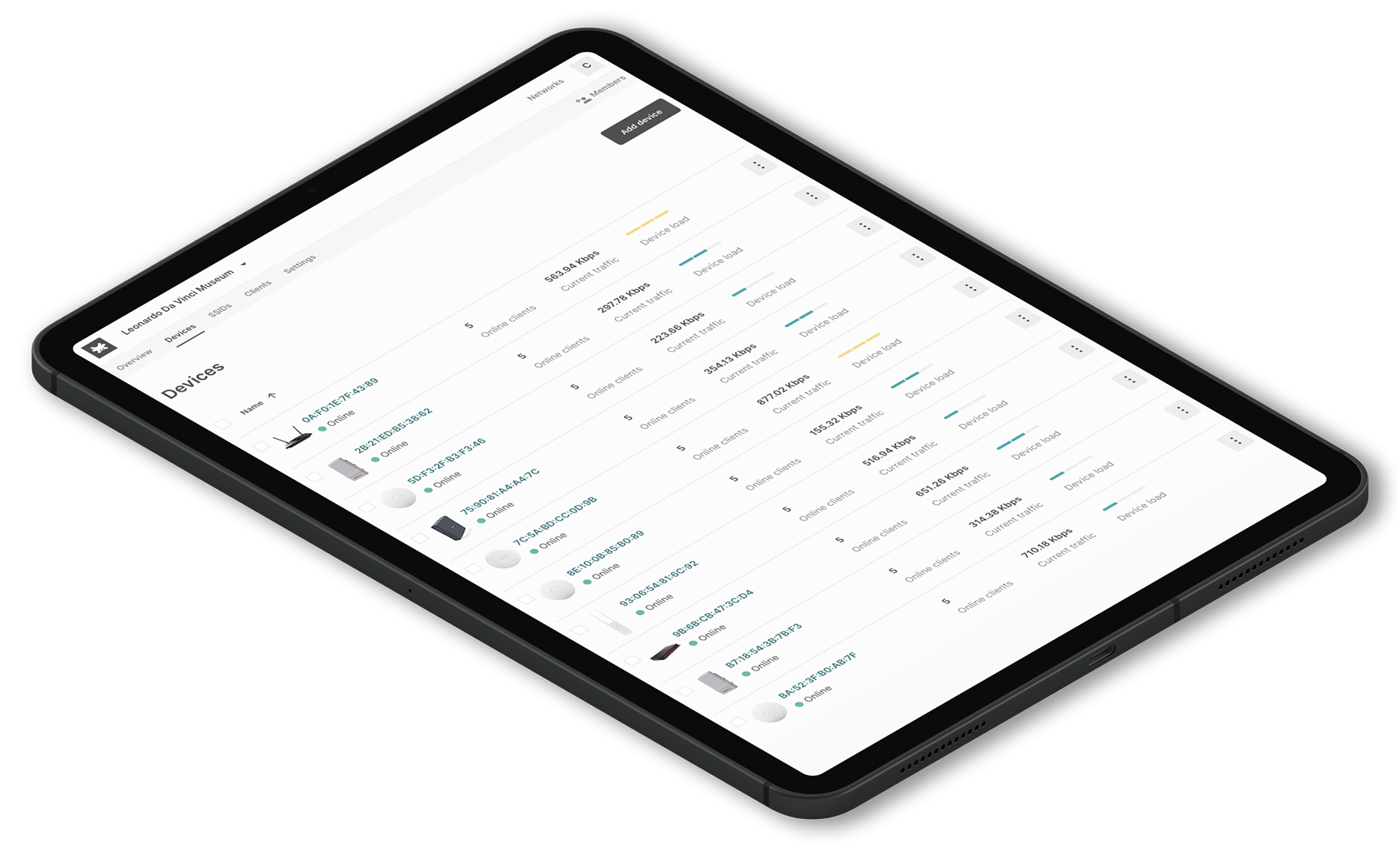
How to reduce operating costs with remote WiFi Network Management
Press play to listen to the article.
Wireless is evolving, accelerated by IoT devices, more connections, and more bandwidth-hungry applications. Future WiFi networks will need more wireless capacity and reliability as the IoT marketplace is changing rapidly. This, however, puts a lot of pressure on the network’s infrastructure, and Service Providers need to find the best solution to cope with the demand while keeping network deployments costs down.
Managing such a complex ecosystem can be stressful and confusing when too much time and money is wasted on daily tasks. Networks are expensive, and just a few businesses can operate without them. However, even if networks are essential for business operations, the money invested in them is always seen as a sunk cost.
Many companies believe that the initial investment of network deployments ends at the time of purchase. Most people do not consider that the initial investment is only a small percentage of the costs they will have to face for use and maintenance.
Gartner, Inc. shows that only 20% of the total expenditure is reflected in the purchase of hardware, software, operations, and administration costs. In contrast, the remaining 80% is invested in what is defined as indirect costs, e.g., end-user operations like technical support or maintenance costs. Thus, the price of WiFi networks goes above and beyond the initial investment.
Five ways to reduce the operational costs of WiFi networks
1. The cost of vendor lock-in
One of the most significant barriers that MSPs and Solution Providers can face when deploying networks is the equipment’s high cost. Some solutions require specific tools in terms of hardware (brand/model), which can represent an essential cost if you need to change the hardware at some point.
Choosing closed software and hardware technologies can lead to huge OpEx, which might increase CapEx very quickly. Nonetheless, the movement of Open-Source is gaining momentum in the networking space. Enterprises are moving towards software-defined networks developed on open-standards.
This means that organizations are not locked into a single vendor when purchasing networking equipment, which can be a substantial cost-saver factor.
The more complex networks become, the more they cost to operate and maintain. A multi-vendor software can solve these difficulties because it lets you choose to work with different brands and models, including your WiFi devices.
2. On-premises system-based
Another obstacle to the growth of MSPs could be the up-front cost of the on-premises infrastructure maintenance to keep the networks up-and-running. Instead, with a software-as-a-service approach, users can easily manage networks remotely, scale businesses, and pay only for the services used.
In this way, users can reduce not only up-front costs and maintenance costs but also CapEx by adopting a “pay-as-you-go” subscription approach.
As mentioned above, the subscription model can replace CapEx expenses with a budget-friendly pay-as-you-go approach. This model can have many advantages and could fit your enterprises’ needs. But, its impact over time must be correctly estimated.
Like ordinary maintenance, these costs should be previewed into a long-term analysis that compares both the purchase and subscription model’s real costs for any network investment you are planning.
Vendor’s bundling packages during the sales process also deserve a review. In a full package, users theoretically can rely on enhanced value through added features and multiple components, which is fine if the bundle package has everything. If not, the likelihood of paying for not used features is high, which will cause higher prices in the operating costs.
4. Total cost of ownership
TCO – the total cost of using and maintaining an IT investment over time – is often ignored and unbudgeted, presenting an inaccurate spending analysis. TCO in WiFi networking considers the initial purchase costs and the additional costs that arise over time and depend on the units wasted.
Although the TCO cannot be the only element to be considered in a company’s technological choice, it still remains one of the fundamental causes of underestimating very high operating costs.
5. 24/7 Support and Monitoring
According to the Enterprise Management Associations (EMA) ‘s research, Network Engineers and Operators use numerous monitoring and troubleshooting tools in their daily activities. Managing networks implies to provide 24/7 support and to be always available for customers.
Nevertheless, if you are an MSP that deals with many clients from multiple locations, this can be a significant costly problem. Consider the transportation costs to get to the customer’s premises to install, troubleshoot, or reboot a device or even upgrade the firmware. Therefore, no matter which WiFi management software you use, to reduce costs and time, make sure the software you choose allows you to operate and monitor the networks remotely.
Remote monitoring as a solution
We recommend relying on a management platform with remote monitoring capability to reduce WiFi networks’ operational cost. It will allow you to manage all your networks and hardware equipment fast and efficiently from one place, without going on-premises.
The WiFi remote monitoring technology allows you to instantly access your equipment and operate networks based on that information. Moreover, you have a full 24/7 overview of the networks and get notifications of any critical operational issues on the system as they occur.
Moreover, it allows you to reduce costs by centralizing your IT staff or adapting your organization to make it more efficient. Managing your WiFi infrastructure remotely gives you the opportunity and the time to focus on your projects, like improve your product and service, innovate, deliver excellent customer service, etc.
Tanaza the WiFi cloud management solution
Tanaza is a cloud-based management solution to operate WiFi networks. It allows the remote deployment, configuration, and troubleshooting of WiFi networks from an intuitive and responsive dashboard.
Tanaza works with all access points powered with TanazaOS, the Linux-based operating system for multi-vendor devices. Also, it has a well-crafted selection of Tanaza Powered Devices that come with the Tanaza software already installed to give customers a plug & play experience.
The Tanaza platform allows users to manage and control thousands of networks and organizations from one dashboard. Apply in bulk centralized network-wide configurations, limit bandwidth, stir devices to different channels, create and manage multiple SSIDs, and much more.
Tanaza gives users the freedom to use multiple brands’ access points, reducing CAPEX considerably. In this way, by reusing the existing WiFi infrastructure, Tanaza enables customers to lower the WiFi networks’ up-front investment.
Furthermore, Tanaza reduces OPEX throughout the whole life cycle of the access points, from installation to configuration and maintenance, allowing to save up to 60% in costs in 5 years. Additionally, it removes the need for physical hardware controllers installed on-premises.
Lastly, Tanaza takes care of many operations, including server maintenance, back-up, security patches, and fixes, and ensures high availability of the system for minimum downtime and productivity losses.
Tanaza is a WiFi cloud management software suitable for indoor and outdoor deployments of medium and large scale. Test the platform and experience all the features available within Tanaza with our free interactive demo.
Try Tanaza
Simulate Tanaza from your browser. Experience the power of WiFi cloud management in seconds.
✔︎ No credit card required



